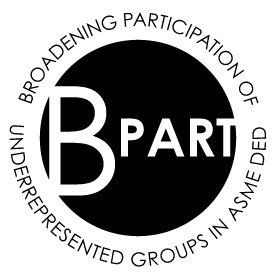CODE OF CONDUCT
Adapted with permission from the "Queer in HCI" SIG group: https://queerinhci.wordpress.com
We are so excited for everyone to come participate and share their thoughts. All are welcome here, and we are going to be encouraging discussion across multiple topics and avenues.
Because our discussions will be taking place in both synchronous (live Zoom) and asynchronous (Padlet, Slack) settings, we are providing a code of conduct for these spaces, along with setting some expectations for how our community will be moderated during this time.
Expectations & Procedure
This year features two text-based discussion spaces: a Padlet for posting ideas and a Slack channel for community discussion. Both of these spaces are for professional conversation, and extended personal discussion should probably move elsewhere.
In the Padlet, every new post and comments to these posts are not pre-screened, but moderators will remove comments that contain offensive, derogatory, or threatening language and sensitive information.
In Slack, there will always be a a moderator on deck that you can ping with concerns if something happens. The Slack will not require post approval, as we expect people to treat this space as a professional forum, but there will always be a moderator responsible for responding to any alerts.
Video Chat: Live voice & video conversations will have a designated facilitator who is responsible for directing turn-taking among Bpart participants. The facilitator will introduce a topic and then open the floor to questions and comments from participants. Bpart participants should raise their hand using the built-in feature in Zoom, at which point the facilitator will grant them the floor. If a particular Bpart chat room has a smaller attendance (less than 10 people), then the facilitator is free to adopt a more flexible discussion style. The facilitator may also nominate an audience member for note-taking if the group requests it.
Code of Conduct
First and foremost, all of ASME Policy Against Discrimination (https://www.asme.org/wwwasmeorg/media/resourcefiles/aboutasme/who%20we%20are/governance/p-15-9-policy-against-discrimination-(including-discriminatory-harassment)-members.pdf) applies to all of Bpart activities and will be enforced in full. Additionally, this event has additional community standards, which apply on top of these. They are outlined below.
Should you feel threatened, or otherwise unsafe, please reach out to the Bpart committee members. The committee members will work to ensure your concerns are addressed promptly.
Below are some rules for how we expect people to conduct themselves in our shared space.
- You Know You, I Know Me – Try not to make assumptions about others, related to gender or otherwise. When speaking, please try to use “I” statements and avoid making generalizations or applying your own ideals to others
- Challenge the idea, not the person – People have a lot of different opinions – and that’s great! Disagreement about different priorities is good and will happen. However, we want to keep discussion centered on those opinions, not the people that have them. If you disagree with an opinion, say so – but don’t attack the person.
- Don’t Giggle My Wiggle – Folks here have different tastes and preferences, so avoid antagonizing language like “I hate that,” or “ew.” Likewise, folks have different traumas and triggers, so avoid language that belittles or trivializes their experiences.
- Don’t be exclusionary – People are different. There’s no one way to be queer. This space is meant to be inclusive of multiple perspectives and experiences. However, explicitly exclusionary opinions, such as gender critical, TERF (Trans Exclusionary Radical Feminist), or SWERF (Sex Worker Exclusionary Radical Feminist) viewpoints are not welcome at this SIG.
- Harassment – We are dedicated to providing a harassment-free experience for everyone. We do not tolerate harassment of SIG participants in any form. Participants violating these rules may be removed from the SIG spaces. We adhere to the ACM Harassment Code referenced above, but have additional policy listed below. Harassment includes, but is not limited to:
- Comments that target other participants based on characteristics such as gender, gender identity and expression, sexual orientation, race, ethnicity, age, ability, status, physical appearance, body size, or religion.
- Deliberate intimidation, stalking, or following
- Unwelcome personal attention
- Persistent, unwanted attempts to contact another group member
- Advocating for, or encouraging, any of the above behavior
Moderation Guidelines
Bpart participants are encouraged to work out disagreements or misunderstandings amongst themselves first. If asking for clarification or letting someone know their comment might cause unintended harm does not work, then please let a moderation team member
know.
Comments, posts, and general discussion identified by a moderation team member as harassment will be removed. We trust everyone in this community to conduct themselves in a professional manner. However, we want to have these guidelines in place to make sure we have a plan rather than be caught without one.
Consequences will be escalated in the following manner:
- Level 1: First time offending posts will be removed or not approved by moderator
- Level 2: Someone who continues in posting material or acting in ways that violates the code of conduct will be private messaged by a group moderator to explain what the infraction is and reminded of the consequences of continuing to violate the code of conduct
- Level 3: Someone who continues to post material or act in ways that violates the code of conduct will be blocked from Bpart 2020 online spaces (e.g. Padlet, Slack, Video Conference spaces).
If a first time offense is bad enough, the organizing team reserves the right to ban the attendee outright.
